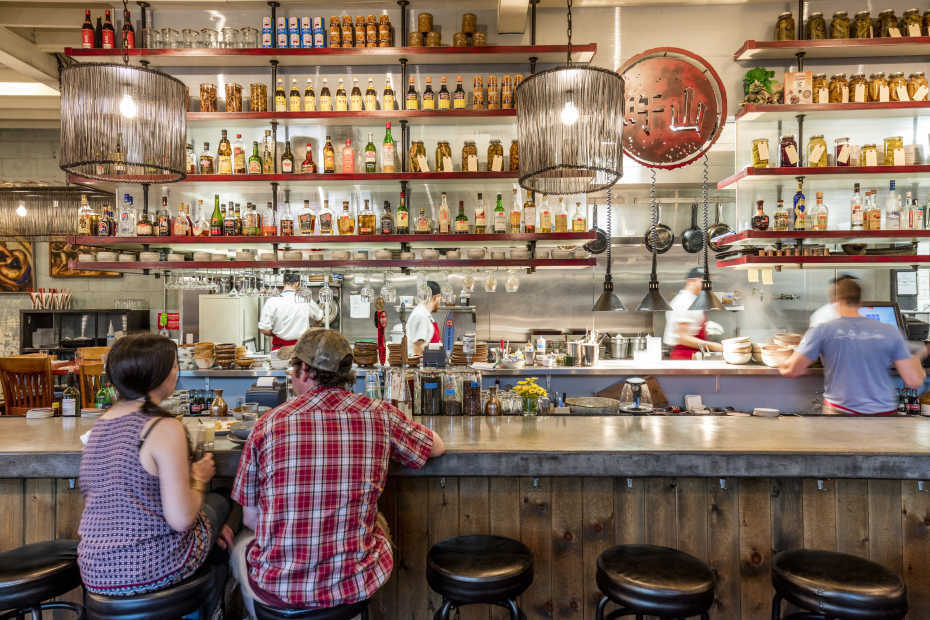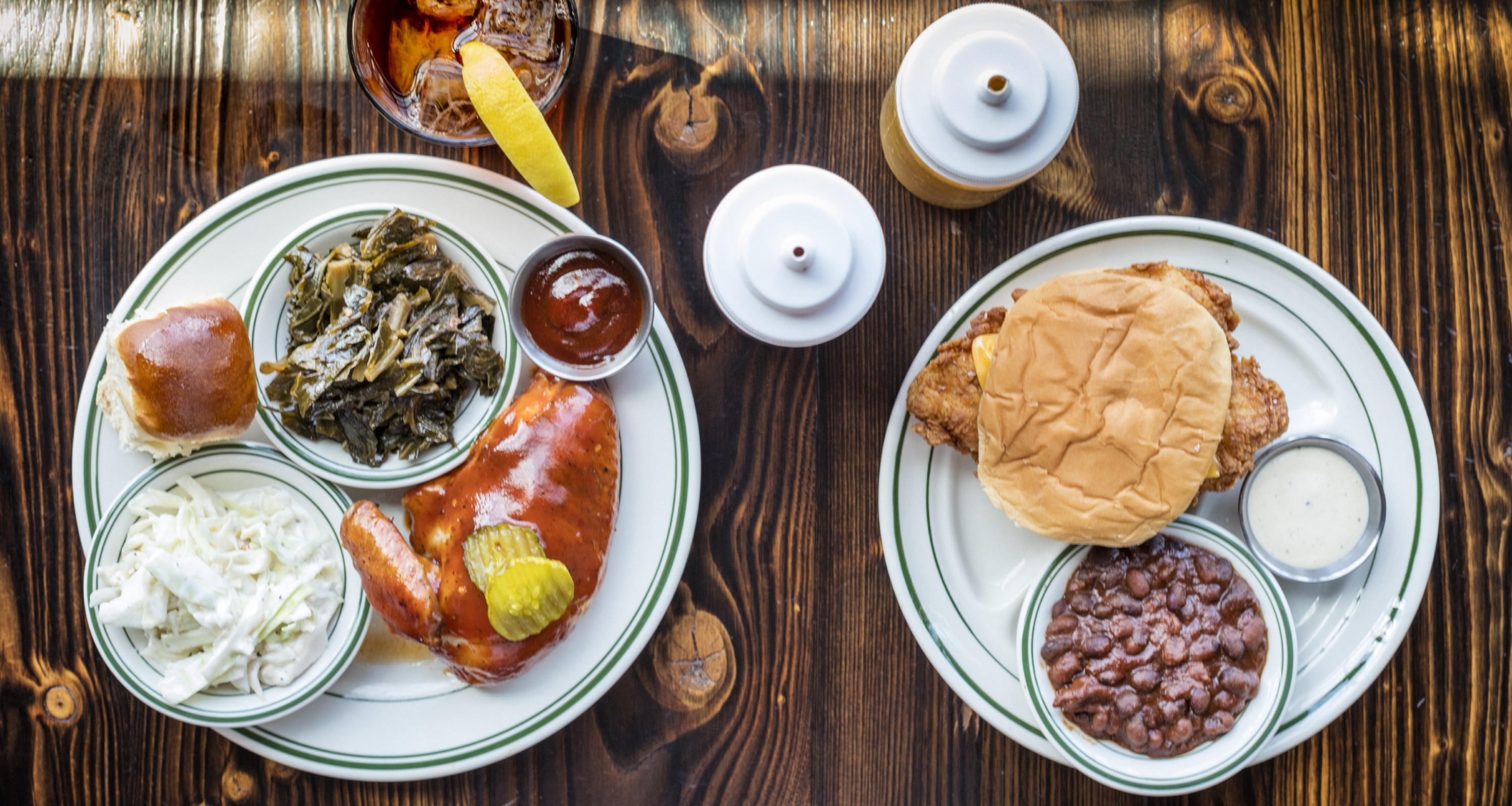
- Iconic Asheville
- Things to Do
- Trip Ideas
- Event Calendar
- Places to Stay
-
Food & Drink
-
Meet the Foodtopians
- 12 Bones Smokehouse
- 67 Biltmore
- Addison Farms Vineyard
- Asheville Distilling Company
- Biltmore
- Biltmore Coffee Traders
- Blue Ridge Food Ventures
- Bouchon
- Burial Beer Co.
- The Cantina
- Carolina Bison
- Chai Pani, Botiwalla & Spicewalla
- The Chocolate Fetish
- Corner Kitchen & Chestnut
- Cucina 24
- Cúrate
- Farm & Sparrow and All Souls Pizza
- Gan Shan Station
- Green Sage Cafe
- French Broad Chocolate Lounge
- Hickory Nut Gap Farm
- Highland Brewing Company
- HomeGrown
- Isa’s Bistro
- Jerusalem Garden Cafe
- Little Pigs BBQ
- The Lobster Trap
- Luella’s Bar-B-Que
- The Market Place
- No Taste Like Home
- Omni Grove Park Inn
- Posana
- Rhubarb
- Rocky’s Hot Chicken Shack
- Rosetta’s Kitchen
- Short Street Cakes
- Sunburst Trout Farms
- Sunny Point Café
- Tupelo Honey Cafe
- Urban Orchard Cider Co.
- Vinnie’s Neighborhood Italian
- Vortex Doughnuts
- Well-Bred Bakery & Cafe
- Wicked Weed Brewing
- Restaurants
- Beer Scene
- Wine & Craft Beverage
- Food Adventures & Culinary Experiences
- Farms & Farmers Markets
- Recipes
-
Meet the Foodtopians
- Great Outdoors
- Packages & Deals
A Food Lover's Guide to Asheville
Whether hot and spicy or sweet and sublime, this city's offerings span the globe.
By Andrew Evans, writing for NationalGeographic.com.
The sweet smell of fried dough punches me in the nose, and I want a bite—now.
“Wait a second,” says the baker, dancing at her station, slinging doughnuts like a juggler.
My eyes fixate on a single hot doughnut, yanked from its frantic oil bath, then dipped for half a second into a pool of milky vanilla glaze. Liquid sugar drips from the golden ring of pastry, and seconds later, I am biting into the freshest, lightest doughnut my mouth has ever known.
At Asheville’s Hole Doughnuts, the Friday morning rush feels like Saturday morning in my grandmother’s kitchen, all yeasty and warm, with little kids and businessmen all licking their fingers and dabbing up crumbs from their plate.
Rolled and cut by hand, the doughnuts are naked, elemental, and real. Their lack of uniformity is symbolic of this funky city and its unpretentious food culture, where back to basics is best.
At nearby OWL Bakery, baker and James Beard Award semi-finalist Susannah Gebhart uses organic butter and local, organic, stone-milled flour to create light-as-a-feather pastries befitting a Normandy boulangerie circa 1919. Every bite brings a surprise burst of revelatory flavors: almond rose, dark chocolate, or creamy basil. Her salty lemon cardamom buns taste like cozy Swedish Christmas.

“I like to create new flavor profiles that reflect the biodiversity of this region,” says Gebhart, who plucks seasonal ingredients from her own kitchen garden. The variety she describes is evident everywhere in this town, from the stocked stands at the Asheville City Market to the inventive small plates of swanky southern bistro bar Sovereign Remedies.
“The secret to success is the huge diversity of produce grown here,” explains food expert Ann D. Stauss. “With the demise of tobacco, local farming changed. Most farmers, especially those following organic growing methods, grow a large variety of produce as a type of crop insurance." Hence the locally sourced roasted yellow summer squash at All Souls Pizza, the super farm-fresh breakfasts of Early Girl Eatery, or the beautiful plate of field peas at restaurant Rhubarb, where chef John Fleer spins magic from the many farms in Buncombe County.
The roadside stand at Flying Cloud Farm is a cornucopia of the season’s plenty: fat clumps of purple-streaked garlic, a rainbow of hot and sweet peppers, okra, juicy raspberries, and bundles of hand-cut wildflowers. The century-old family farm tradition continues at neighboring Hickory Nut Gap Farm, where visitors can pick up some of the same cured meats that fill charcuterie plates across Asheville bars and restaurants.
More than a passing trend, the farm-to-table bond is anchored in the Appalachian Sustainable Agricultural Project (ASAP), connecting farmers with markets. (For insider info, consult their local food guide.)

Travelers on the WNC Cheese Trail can taste-test their way through nearly a dozen cheesemakers, including Blue Ridge Mountain Creamery, whose cave-aged Taleggio is simply phenomenal.
From sublime to spicy, Asheville’s palate spans the globe. Vegan-friendly Chai Pani steers diners away from the wedding banquet cuisine of more classical Indian restaurants toward the colorful, texture-rich delights of Bombay street food. “We never changed the food, we changed the presentation,” says former brand director Michael Files.
The “tangy, spicy, crunchy” bhel puri, tender kale pakora, and salty-sour okra fries send diners into murmuring splendor. Meanwhile, Gan Shan West dishes up a veritable rainbow of East Asian delights—I could not stop with the plump veggie dumplings and the honey/lime/chili pork ribs.
But the beauty of everything new is how it springs from deep Carolina roots. The impossibly popular 12 Bones (worth the long line) brings old-school, slow-smoked perfection to the barbecue scene. Similarly, you can taste the wood-fire goodness in every dish at Smoky Park Supper Club, or eat the whole hog on a single sandwich (well, figuratively at least) at Buxton Hall. Wash it down with any one of over a hundred beers crafted right here in Asheville, “Beer City.

If you still have room for dessert, bean-to-bar French Broad Chocolate has a plush seat for you in their decadent dessert lounge that leaves you smelling like chocolate (say yes to the highland mocha stout cake). Or head down to The Hop for a scoop of handmade, small-batch ice cream.
Before you leave, pick up the provisions you simply can’t find elsewhere, like pure artisanal honeys from the Asheville Bee Charmer, a few boot-stompin’ bottles of O’ Yeah! Hot Sauce, incomparable Lusty Monk mustard, or a ready-to-go picnic basket from The Rhu (ask for the fluffernutter cookies).
Asheville—whose food scene is affectionately known by locals as Foodtopia—simply tastes good, and best of all, every bite is personal. The culinary art scene meets adventuresome eating meets southern hospitality all make this city a dining destination worth visiting. Trust me, your taste buds will thank you for it.
This article also appeared on NationalGeographic.com.
 Andrew Evans is an award-winning author, travel writer and TV host. He is the author of five books and a contributor to over a dozen titles, including the bestselling 1,000 Places to See Before You Die. As National Geographic’s Digital Nomad, Andrew completed over 30 assignments across all seven continents. He continues to write for NatGeo.com, National Geographic Traveler, Afar, BBC Travel, Smithsonian, Chicago Tribune, and Readers’ Digest. His upcoming travel memoir The Black Penguin (University of Wisconsin Press) will be released in March 2017. Find Andrew on Twitter at @wheresandrew.
Andrew Evans is an award-winning author, travel writer and TV host. He is the author of five books and a contributor to over a dozen titles, including the bestselling 1,000 Places to See Before You Die. As National Geographic’s Digital Nomad, Andrew completed over 30 assignments across all seven continents. He continues to write for NatGeo.com, National Geographic Traveler, Afar, BBC Travel, Smithsonian, Chicago Tribune, and Readers’ Digest. His upcoming travel memoir The Black Penguin (University of Wisconsin Press) will be released in March 2017. Find Andrew on Twitter at @wheresandrew.
Cookies are used for measurement, ads and optimization. By continuing to use our site you agree to our Cookies are used for measurement, ads and optimization. By continuing to use our site you agree to our privacy policy.

For Visitors
For Media
For Planners




